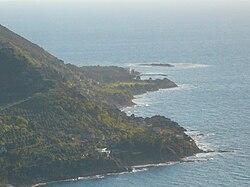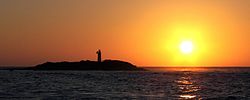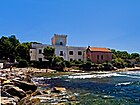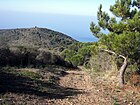
Agropoli is a town and comune located in the Cilento area of the province of Salerno, Campania, Italy. It is situated at the start of the Cilentan Coast, on the Tyrrhenian Sea.

Pisciotta is an Italian town and comune of the province of Salerno, in the region of Campania.

Camerota is a town and comune in the province of Salerno in the Campania region of south-western Italy.

Castellabate is a town and comune in the province of Salerno in the Campania region of south-western Italy. It is a member of the I Borghi più belli d'Italia association.

Castelnuovo Cilento is a town and comune in the province of Salerno in the Campania region of south-western Italy.

Montecorice is a town and comune in the province of Salerno in the Campania region of south-western Italy. As of 2011 its population was of

Ogliastro Cilento is a town and comune in the province of Salerno in the Campania region of south-western Italy. As of 2011 its population was of 2,241.

Prignano Cilento is a town and comune in the province of Salerno in the Campania region of south-western Italy. As of 2017 its population was of 1,035.

San Mauro Cilento is a town and comune in the province of Salerno in the Campania region of south-western Italy.
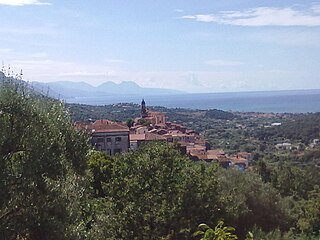
Vibonati is a town and comune in the province of Salerno in the Campania region of south-western Italy.
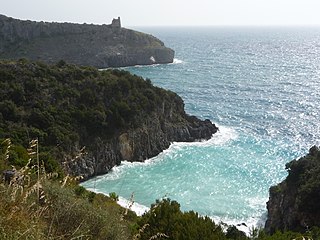
Cilento is an Italian geographical region of Campania in the central and southern part of the Province of Salerno and an important tourist area of southern Italy.
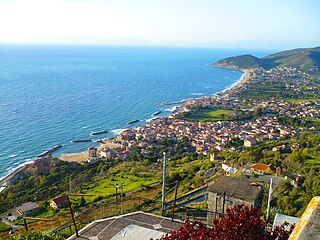
Santa Maria di Castellabate is a southern Italian town and hamlet (frazione) of Castellabate, a municipality in the province of Salerno, Campania. It is the most populated frazione of its comune and the seat of the town hall building.

Tortorella is a town and comune of the province of Salerno, Campania, in south-western Italy.

Cilento, Vallo di Diano and Alburni National Park is an Italian national park in the Province of Salerno, in Campania in southern Italy. It includes much of the Cilento, the Vallo di Diano and the Monti Alburni. It was founded in 1991, and was formerly known as the Parco Nazionale del Cilento e Vallo di Diano.

Agnone Cilento, also shortened as Agnone, is an Italian hamlet (frazione), the greatest one in the municipality of Montecorice in the province of Salerno, Campania region.

The Cilento Coast is an Italian stretch of coastline in Cilento, on the southern side of the Province of Salerno. It is situated between the gulfs of Salerno and Policastro, extending from the municipalities of Capaccio-Paestum in the north-west, to Sapri in the south-east.

Case del Conte, sometimes also spelled Casa del Conte, is a southern Italian village and hamlet (frazione) of Montecorice, a municipality in the province of Salerno, Campania. As of 2009 its population was of 235.

San Marco is a southern Italian village and hamlet (frazione) of Castellabate, a municipality in the province of Salerno, Campania. As of 2009 its population was of 1,139.
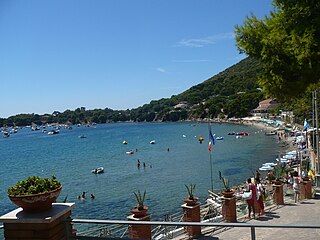
Ogliastro Marina, sometimes shortened as Ogliastro, is a southern Italian village and hamlet (frazione) of Castellabate, a municipality in the province of Salerno, Campania. As of 2009 its population was of 172.
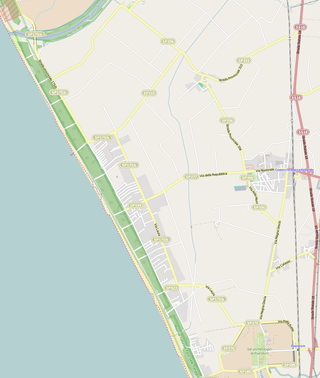
Laura is a southern Italian village and hamlet (frazione) of Capaccio, a municipality in the province of Salerno, Campania. As of 2001 its population was of 1,301.
